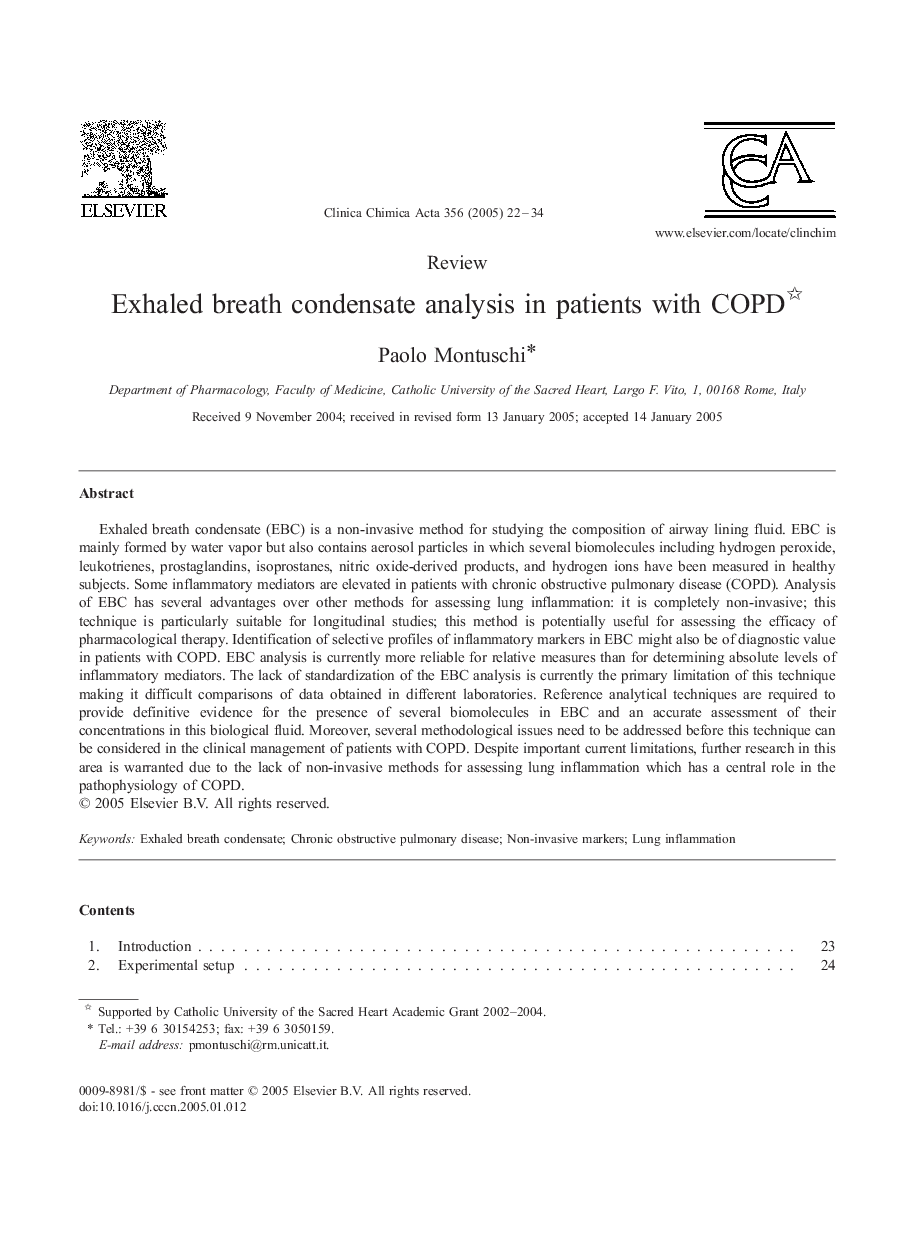| Article ID | Journal | Published Year | Pages | File Type |
|---|---|---|---|---|
| 9888117 | Clinica Chimica Acta | 2005 | 13 Pages |
Abstract
Exhaled breath condensate (EBC) is a non-invasive method for studying the composition of airway lining fluid. EBC is mainly formed by water vapor but also contains aerosol particles in which several biomolecules including hydrogen peroxide, leukotrienes, prostaglandins, isoprostanes, nitric oxide-derived products, and hydrogen ions have been measured in healthy subjects. Some inflammatory mediators are elevated in patients with chronic obstructive pulmonary disease (COPD). Analysis of EBC has several advantages over other methods for assessing lung inflammation: it is completely non-invasive; this technique is particularly suitable for longitudinal studies; this method is potentially useful for assessing the efficacy of pharmacological therapy. Identification of selective profiles of inflammatory markers in EBC might also be of diagnostic value in patients with COPD. EBC analysis is currently more reliable for relative measures than for determining absolute levels of inflammatory mediators. The lack of standardization of the EBC analysis is currently the primary limitation of this technique making it difficult comparisons of data obtained in different laboratories. Reference analytical techniques are required to provide definitive evidence for the presence of several biomolecules in EBC and an accurate assessment of their concentrations in this biological fluid. Moreover, several methodological issues need to be addressed before this technique can be considered in the clinical management of patients with COPD. Despite important current limitations, further research in this area is warranted due to the lack of non-invasive methods for assessing lung inflammation which has a central role in the pathophysiology of COPD.
Keywords
Related Topics
Life Sciences
Biochemistry, Genetics and Molecular Biology
Biochemistry
Authors
Paolo Montuschi,
